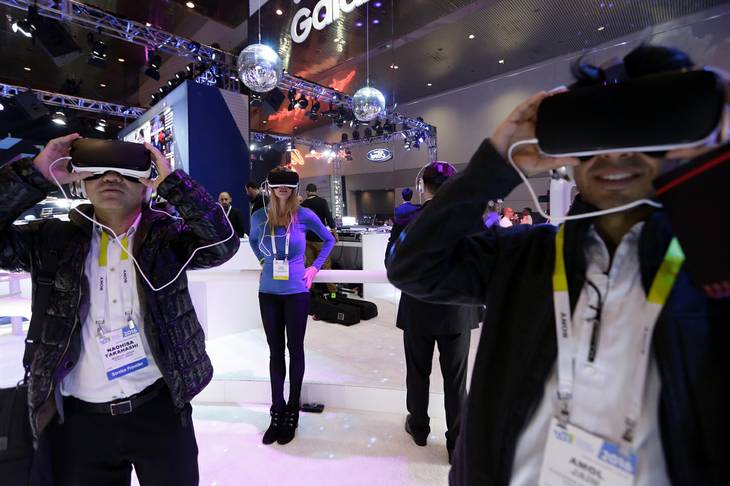During a breakfast Friday morning at the Las Vegas Convention Center, co-founder and former CEO of AOL offered his prediction for what the next iteration of the Internet will look like. The first wave — building out the Internet — relied on the collaboration of different groups, including companies and the government. The second wave — building on the Internet with applications — was driven by people and products.
Speaking to CES exhibitors and local business executives at a World Trade Center Las Vegas breakfast, Steve Case said the third wave, which he said would be defined by integrating the Internet in all aspects of life, will resemble the first. It too will require partnerships with industry and the government to be successful.
That third wave, fusing technology with everyday life, was a recurring theme at CES this year. There was the Internet of Things, the idea that all objects, even homes and water bottles, should be connected to the Internet. It was also apparent in the idea that hardware could enhance and potentially disrupt industries.
Early Friday morning, the convention hall was packed. Given the crowds and traffic this week, ride-sharing companies Uber and Lyft have been vying for customers, with promotions inside the hall and on busses.
Some of the largest crowds at the exhibit space Friday morning were clustered around two categories, virtual reality and drones, which proponents argue could be applied to a range of industries.
More Coverage
- Driver optional: Carmakers show off autonomous, electric vehicles at CES
- Fashion meets tech: 5 unique garments from CES
- Wraps are off Faraday Future car, but questions about company linger
- ‘Virtually anything is possible’: Faraday Future unveils concept car
- Reading, writing, robots: A look at education technology on display at CES
Virtual reality:
You are skiing down a mountain with Bode Miller on a World Cup course. You have a 360-degree view. You see the course in front of him. You look down and see him shift weight from leg to leg as his skis move. Or you are in North Korea for an ABC News segment. You see a militaristic rally. You see the inside of a hotel room.
These are some of the possibilities of virtual reality, which was integrated into many of the exhibits, hinting at how it could be applied to an array of industries. On Thursday evening at VR Fest, a separate event devoted to the technology, one group showcased a baseball program used to train batters. It simulates a series of pitches and shows where they fall in or out of a strike zone.
At an Intel exhibit, a demonstrator used virtual reality with Tilt Brush, a painting application from Google that allows for drawing in a 3D digital space. Faraday Future, the electric-car company that is building a factory in North Las Vegas, had virtual reality goggles at its booth to showcase the interior of its car.
Some exhibitors showcased ways virtual reality could enhance experiences with music. VRTIFY, coming in the second quarter, promises an immersive experience by streaming concerts filmed with 3D cameras.
A passenger drone:
Next to the virtual reality exhibits were a series of demonstrations for drones.
Several drone platform-companies had booths scattered throughout CES this year.
Chinese drone company Ehang generated perhaps the most news when it debuted the first passenger drone Thursday. It’s a one-seater that is entirely electric-powered. It looks like an enlarged quadcopter with a helicopter’s body. The low-altitude drone can fly for just over 20 minutes and charges in two to four hours. Unlike most passenger aerial vehicles, Ehang’s drone doesn’t require pilot training. According to Ehang, once a flight-plan is set, the drone needs only two clicks to operate, one to land and one to take off.
Come ride with me:
Having launched this fall, both Uber and Lyft were using CES as an opportunity to advertise their ride-sharing services. The two companies each offered discounts to first-time riders. And throughout the four-day convention, Uber, in a partnership with Maverick Helicopters, was offering a helicopter service, UberCHOPPER, that gave users the option to pay $99 for a 15-minute sightseeing ride along the Strip.

